I don’t know if it’s because I’m Filipino that I love condiments so much. I remember as a child setting the table for meals and getting out the bottles of condiments that my parents preferred and setting it by their places. For my father: Kikkoman soy sauce and Worcestershire sauce, for my mother: Tabasco hot sauce and fish sauce. It was from my parents that I learned to adjust the seasonings of my food with various sauces. So I guess it stands to reason that our refrigerator looks like the condiment aisle of a grocery store. My husband will tell you that he is overwhelmed with all the different types of soy sauces, chili and hot sauces, pickles, peppers, jams and preserves that occupy our fridge. I can’t help it. I love being able to change the flavor of a dish with the addition of a condiment. Plus, like all Asians, I’m always looking for balance in my food. A little salty dish is better with a bit of sour or sweet on the side. When I worked as a line-cook, we talked constantly about balancing flavors and preventing “palate fatigue” when we create a dish. (Palate fatigue is when your palate gets ‘tired’ of eating the same food that is only one flavor type, like sweet, salty or rich and fatty.) For example, I LOVE cheeseburgers. But after a couple of bites of a plain cheeseburger with just the meat, cheese and bread, I find myself getting tired of the fatty salty flavors. I crave the addition of the tart ketchup and pickles, the crunchy lettuce and juicy tomatoes to provide a counterpoint to the rich beef and cheese that ultimately makes the cheeseburger so much better.
So, fast forward to the present. A few years ago, I became obsessed with making my own condiments. It began simply enough with salad dressings, then progressed to pickles, then mayonnaise and homemade mustards and even ketchup. More jars and bottles began filling our already over-burdened refrigerator! Then, I began making my own mole and curry pastes. These are both laborious but I loved every aspect of it- warming and grinding spices, soaking and toasting peppers. Then, a few years ago, I ran across this book in a used book store:
It was a Portuguese cookbook and as the husband-geek has some Portuguese in his lineage, I bought this book and began cooking from it. One of my favorite finds was this simple recipe for Massa de Pimentao or Sweet Red Pepper Paste. This is simply preserved pureed red peppers that is used like mirepoix in French cooking or trinity in Creole and Cajun cooking. The Sweet Red Pepper Paste serves as a foundation for stews and braises. It is very easy to make and requires only 3 ingredients- red bell peppers, coarse salt and olive oil. The peppers are trimmed and cut, placed in a colander and layered with salt. It is weighed down and left to drain for 5 days. Then the excess salt is removed and the peppers are processed either in a grinder, food processor or blender. The coarsely ground peppers are put in glass jars and covered with olive oil. That’s it. Since it’s very salty and strong tasting, it should be used very sparingly.
Here’s the formal ‘recipe’ from the book: Portuguese Homestyle Cooking by Ana Patuleia Ortins:
4 large red bell peppers, cored, seeded and quartered
5 pounds coarse or kosher salt
1/2 cup good-quality olive oil
- Set the colander inside a large noncorrosive pan or dish with sides.
- Pour a 1-inch layer of salt into the colander to form a base. (Some of the salt will seep out.)
- Place a layer of peppers, skin side up, on the salt, pressing the peppers into the salt. Be sure to uncurl even the smallest part of the peppers, otherwise mold will form.
- Cover with a 1/2-inch layer of salt and add the remaining peppers, ending with another 1/2-inch layer of salt. Place a heavy dish or bowl on top to weight it down. Let stand for 5 days to allow the moisture to drain from the peppers. The peppers will be thinner, about 1/4-inch or less. The salt will be damp and the amount of liquid draining will be barely a trickle.
- Shake off the excess salt and process the peppers briefly with either a hand-cranked grinder, food processor or blender. The texture will not be smooth- more like coarsely ground tomatoes.
- Fill the jar(s), leaving about an inch at the top. Pour olive oil over the top to the depth of 1/2-inch. Close the jar tightly and refrigerator.
- To use massa de pimentao, simply push aside the congealed olive oil with a spoon, remove what you need and replace the oil and add more in necessary. Use sparingly.
- Note: The massa de pimentao will keep for several months in the refrigerator when stored as directed.
My favorite way to use it is as a rub for cubed pork shoulder. I brown the meat and braise it with some red wine and throw in some clams to create the emblematic Portuguese dish- Carne de Porco a Alentejana or Pork with Clams. It’s also wonderful stirred into a bean soup to add a perky, peppery depth. You can also stir a small amount into some mayonnaise for a wonderful sandwich spread. I hope you try this and let me know how you used it.
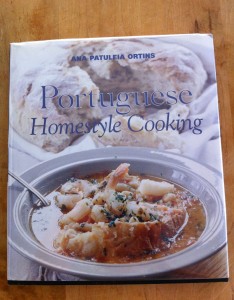
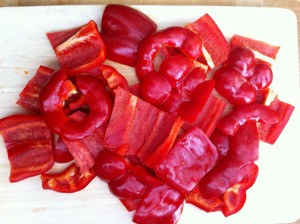
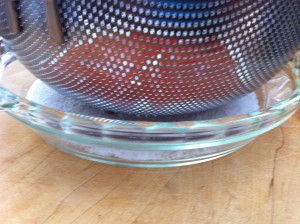
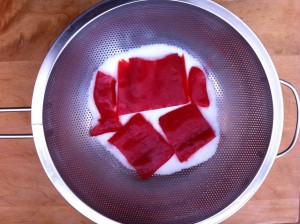
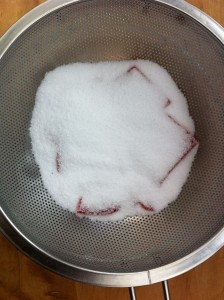
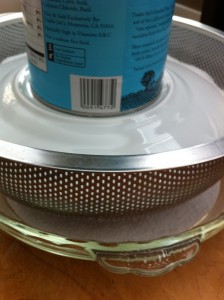
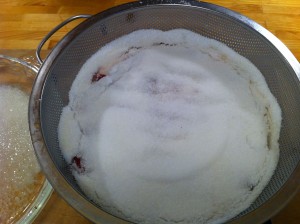
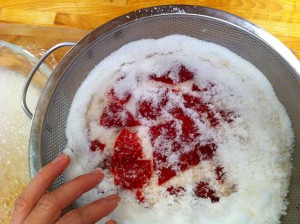
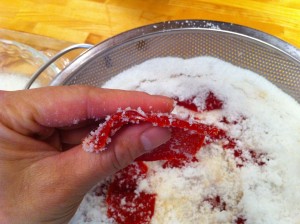
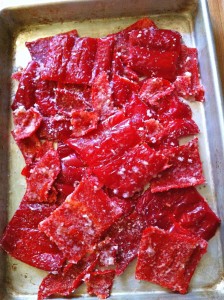
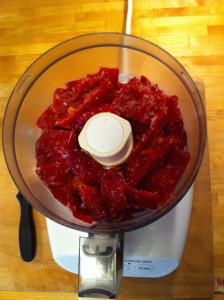
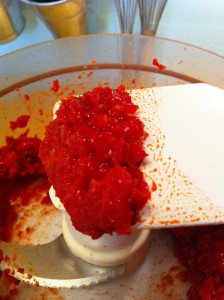
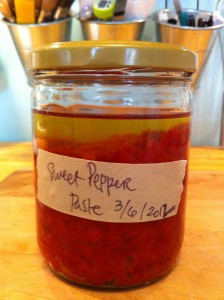








Comments
richard
Posted June 27, 2012I use the store version with garlic and lemon with almost everything including fish and chicken.
ANITA ATTIPOE
Posted May 15, 2013I LOVE THIS RECIPE AND I WOULD LOVE TO HAVE IT MAILED TO MY EMAIL ADDRESS TO PRACTICE.
samantha
Posted June 10, 2013Sorry for the late reply. The recipe is in the article/post already. Please let me know if you can’t see it. Thanks for visiting the site!
Isabel
Posted October 30, 2013I remember my mother making this pepper paste. It is good.
Leave a reply